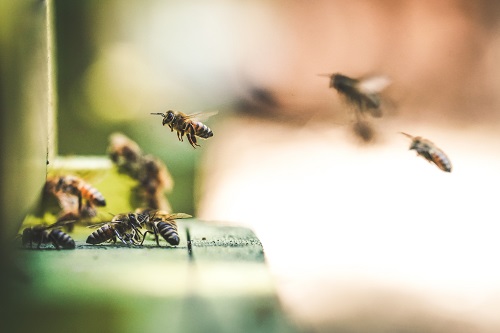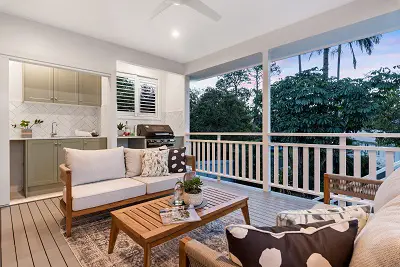List of Hanging Flower Plants That Will Brighten Up Your Garden
Ever considered having a vertical garden of your own? They are your perfect solution to small space gardens. Hanging baskets are not only good for planting flowers. You can even have your own vertical kitchen garden without the risk of pest infestation. Hanging baskets are a little tougher to keep but definitely more rewarding in terms of adding beauty to your garden.
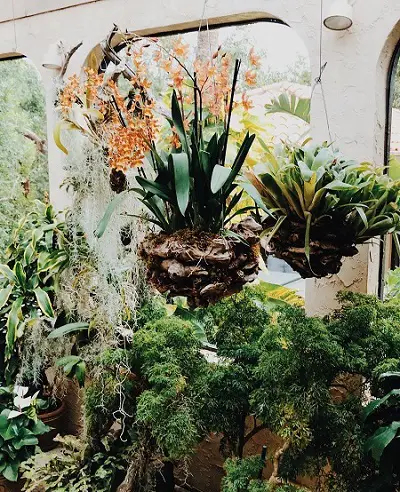
Tip: Coir liners made from coconut hulls are very important as they retain both soil and moisture.
5 Flowering Plants Best For Hanging Baskets
When it comes to hanging plants, there are so many plant and container options to pick from, depending on how you choose to look at them. If you are a minimalist, go for airier plants but if you are looking for eye candies then you must opt for busy and trailing flowering plants. Here is our list of flowering plants with their tiniest details that are best for growing in hanging baskets.
1. Petunia
Petunia is a gorgeous flower-bearing plant that is perennial but acts as annuals. The major reason behind this is they cannot take colder environments, so survival becomes difficult in winters. The sweet fragrance can be a source of joy all spring if you plan to hang it in your garden. If you want your Petunias to last longer, we suggest giving them the best possible care and deadheading the plant. Petunia with their rich colored flowers can be the optimal goal for your garden. Choose the breed of this plant for your hanging basket which is able to shed on its own and attracts a lot of pollinators.
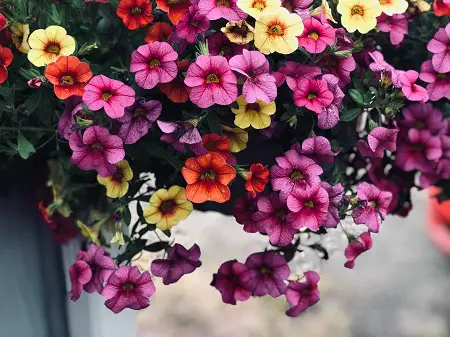
● Care:
Petunias require moderate watering and moist soil. We suggest that you let the soil dry between watering because they have delicate roots and are prone to rotting if introduced to excessive water. These flowering plants require at least 5-6 hours of sunlight. Just protect them from the afternoon sun as that might damage the delicate flowers. And they love warm climates.
● Plant Height:
A mature plant can size up to 24 inches tall (maximum) and 36 inches wide.
● Sowing/Blooming Season:
When the last of the frost disappears and warmth descends, this is your cue to plant Petunias. These gorgeous flowering plants are the eye candy for springtime and bloom till the frost season starts.
● Native To:
These plants are native to South America.
With this tutorial on how to pick a planter for your plant, you’ll understand the science behind selecting the right one.
2. Pansies
Remember the flower with a face that would always enchant you in your childhood? Well yes, you guessed it right! We are talking about the striking Pansies here. They are best for planting in containers and they can give you a pleasant presence all year round as they can be grown in summers as well as winters.
Fun Fact: Did you know that Pansies are one of the few edible garden flowers? They have a mild minty flavor and are used vastly in desserts.
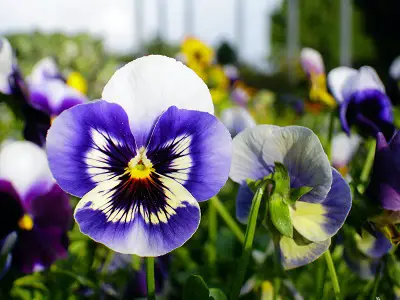
● Care:
They need regular watering and good fertile soil if potted in plants. They like the sun but can do well in partial sun as well. Deadheading is very important for pansies as it makes more room for new flowers. As they like cooler temperatures, warmer temperatures can have an adverse effect on their blooming.
● Sowing/Blooming Season:
When planted in late summer to mid/late autumn, they are ready to bloom through winter and the following spring. They can also be planted in spring to early summer to bloom through the growing season.
● Plant Height:
The plant height can reach up to 6-9 inches high.
● Native To:
Pansies were first cultivated in England and then later in Europe.
3. Begonias
These are the easiest flowering plants to grow. These are perennial flowering plants (usually treated as annuals) that grow well in cooler climates. The flowers are enchanting and found in a variety of colors. Try hanging the flower pot under a tree branch in the shade as these plants cannot take much sun exposure. Large heart-shaped leaves and cream to pink flowers make them a focal point of your garden. A broken stem or leaf stalk stuck in soil often roots as a new plant.
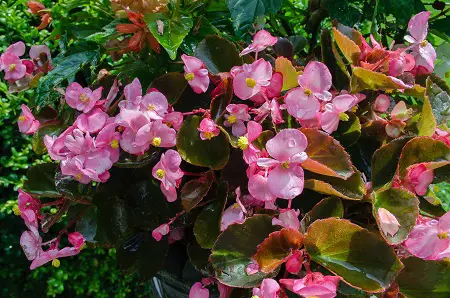
● Care:
They need ample but indirect sunlight to thrive. Do not overwater as they are very much prone to root rot. Fairly moist and fertilized soil will do for them. While watering, make sure that you keep the leaves dry. Begonias need high humidity and wind protection to flourish.
● Plant Height:
They can grow up to 12 to 18 inches tall.
● Sowing/Blooming Season:
The blooming season for this flowering plant starts in June and ends with the first frost.
● Native To:
Begonias are native to tropical and subtropical regions. They are found in Central and South America, Asia, and some parts of Africa.
4. Fuchsia
These flowering plants come in a lot of varieties and they look even more amazing while dropping out of the hanging baskets. A wonderful treat for the pollinators, these will be much surrounded by bees in your garden. It is recommended to clean the container regularly from debris and dead leaves as they are easily subjected to infections. The beautiful and multi-colored, lantern-shaped flowers are eye candy for your garden.
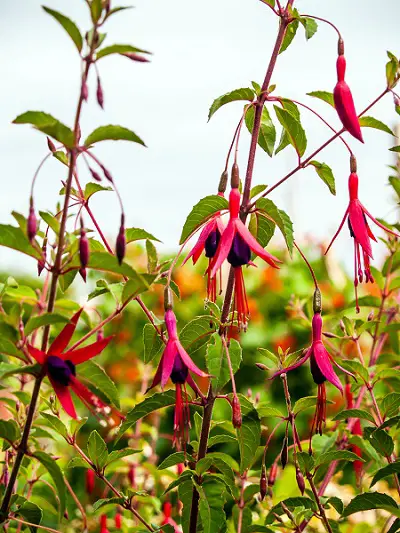
● Care:
Fuchsia likes wet but not soggy roots, so do not overwater them. In summers, you might want to water it twice to save them from dehydrating. Do not over-expose it to the sun as it might burn. Full morning sun for a few hours is sufficient for them to thrive. The cool temperature and moist air are also a must for their best growth results.
● Sowing/Bloom Season:
They start blooming in mid-March to early April if cultivated early.
● Plant Height:
A mature plant will grow up to 1 to 2 feet tall
● Native To:
These flowering plants are indigenous to South and Central America.
5. Lantana
Lantana is a perennial flowering plant that comes back every year. Gorgeously aesthetic, these bush plants bear clusters of colorful tiny flowers. The berries that appear on the Lantana bush are the fruit of the plant. The single seed barriers appear when the flowers are pollinated. If you are planning to grow this plant at home, it is suggested to get rid of the fruit as they are toxic. As long as you plan to hang them, they might not cause any harm. This plant itself is fatal as all of its parts are extremely toxic, especially to animals. From jaundice to liver damage, if taken in, this plant can cause severe complications.
Fact: They are nontoxic to birds, hence they are the biggest pollinators.
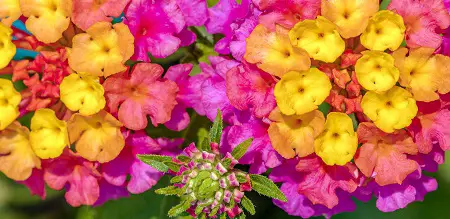
● Care:
Watering Lantanas with ample water once a week should be sufficient. This is the case for mature plants. These plants are not high maintenance but newly planted once require regular watering. Choose a sunny spot with a water draining pot to plant them.
● Sowing/Bloom Season:
The best sowing time for lantana is around midwinter as the germination process is a little slow for some seeds. The blooming season starts in late spring and lasts till late autumn or till the first frost appears.
● Plant Height:
Treat them as annuals while growing 3-4 feet tall.
● Native To:
These are native to the tropical regions of Africa and America. They have been introduced lately to Australia and Southern parts of India. In fact, their plantation in Australia has not been a successful one as they have taken over the species that are native to Australia.
Got palm plants and pets both at home and always wondering are indoor palms toxic to cats and dogs? Check which palms are harmful and which are not.
Vegetables & Fruits That Can be Grown In Hanging Baskets
Want to save space while you enjoy the fresh harvest of your kitchen garden all year long? Welcome to growing fruits and vegetables in hanging baskets. So flowers are not the only thing that you grow in hanging baskets. Make a small vegetable garden with an aesthetic twist with these baskets. Even if you live in an apartment space, you can have this option by hanging these baskets on your balcony. The best part is that you won’t have to worry about your pets spoiling your tiny harvest.
1. Cherry Tomatoes
The best way to grow cherry tomatoes is by growing them in containers and pots. When you choose to plant them in a hanging basket make sure you pick the best variety that grows in pots. We suggest that you pick the type that stays small (dwarf size). Ideally use a 20-inch wide pot for relatively bigger-sized tomatoes. But if you have small ones, then you can go for 14 inches wide and 12 inches deep.
Care: Tomatoes need almost 6 hours of direct sunlight. Water your plants twice if the climatic conditions are warm.
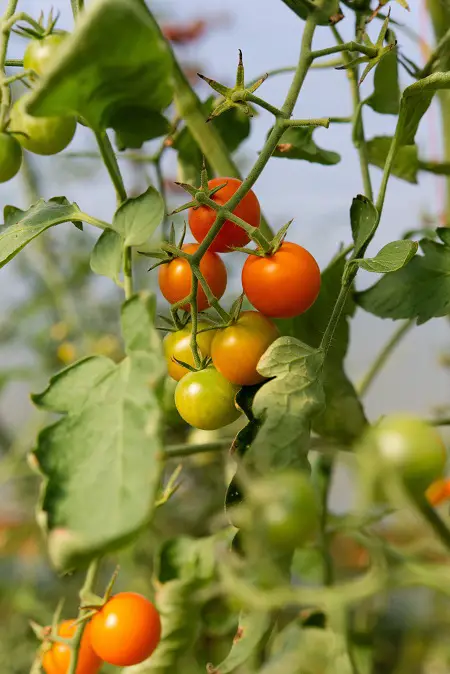
2. Strawberries
Want tasty fruit and gorgeous flowers in a hanging basket? Go for planting strawberries! The best part: you will get ripe fresh fruit in a few weeks’ time after seeding them. And imagine the splendor they will bring to your garden.
Care: Fertilize the plants once they start to bloom. Hang the basket in a sheltered spot. The fruit needs sunlight to ripen.
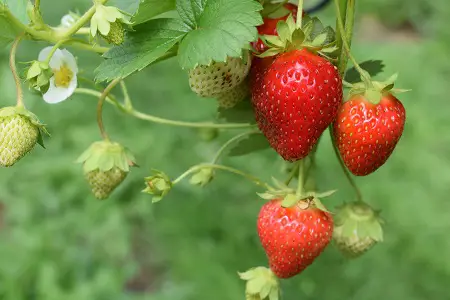
3. Spring Onion
It’s so easy to grow green onions and the best part about them is that you can grow them in the smallest space. Just make sure that you choose a shallow container that is not deeper than 6-8 inches. Even if you don’t want to grow them from seed, sow a bulb of your favorite onion. Seed plantation takes a longer time as compared to the bulb plantation.
Care: You need to keep the spring onion well-watered. But that does not mean it should be soggy. There is no restriction of a particular time to plant green onions. If you live in a tropical place, you can grow them all year long. They need a hefty amount of sunlight. Make sure that you plant spring onions in nutrient-rich compost. If you think that the plant is not doing well, just add fertilizers.

4. Leaf Lettuce
Now you can grow your own fresh leaf lettuce at the convenience of your home in hanging baskets. Don’t even worry about the pests attacking them. A wire-type basket is considered best for growing lettuce as the leaves can hang from all sides and create a globe.
Care: The best time to grow lettuce is in spring and fall. They need to grow in full sun. But if you live in warmer regions, provide shade from the harsh heat of the sun and water them more than once. You need quality soil to plant leaf lettuce.
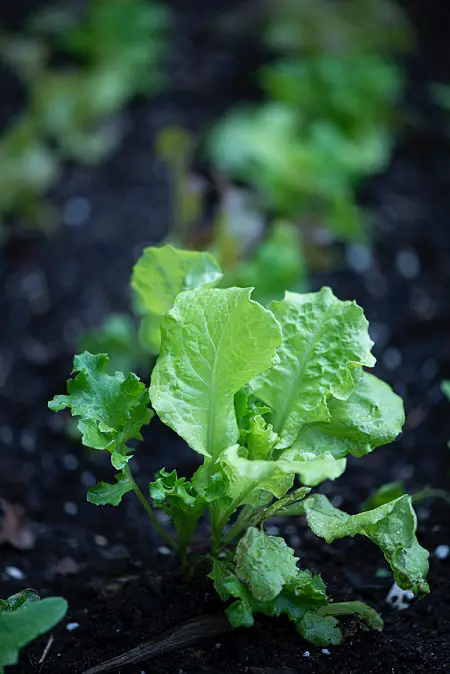
5. Spinach
Fresh spinach is just wonderful with blue cheese or some Italian dressing and a kitchen garden is just not complete if you don’t have spinach planted. If you want an easier way out, start with the spinach plant. Germinating spinach seeds can be quite a challenge.
Care: Spinach loves full sun exposure but still can survive in partial shade. Pot them at least six weeks before the last frost. Spinach is a cool-season plant. Use a wired basket for planting spinach. Spinach leaves are all about water so give them ample. But good drainage soil is very important. Keep a free hand on fertilizers for growing spinach.
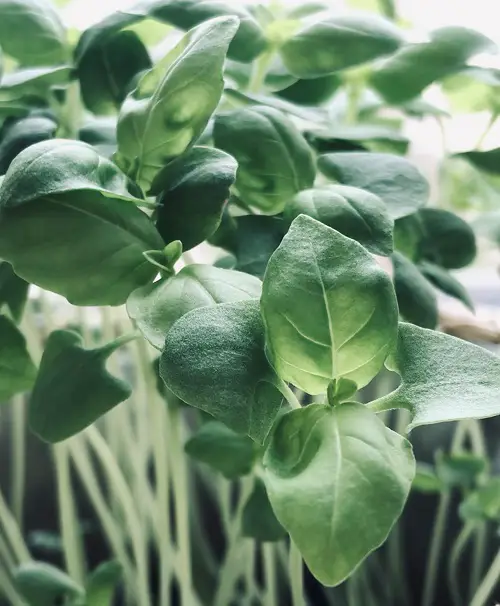
With this guide to choose a perfect pot for your fiddle leaf trees, you can make a big difference in their proper growth.
Some Advantages of Hanging Plants
● Avoid Worrisome Pets
Some plants, as beautiful as they are, might have toxic foliage. When you plant them in hanging baskets, you get a relaxed time in your garden without the fear of your pet biting into them or your child touching them. If you live in a location where your garden gets invaded by wild animals every now and then, hanging baskets are your best bet.
● When Cold, Can be Taken Indoors
Some flowering plants cannot thrive in cold weather or some might not be able to take the cold wind. You have the option of taking your seasonal plants indoors to provide them with suitable growing conditions when you put your plant containers in hanging baskets.
● Amazing Home Décor
Spruce up your garden décor by adding hanging baskets to your patio or any tree branches. Imagine the serenity it would bring to your property. Hanging basket planters can be a great addition to your home décor. These can be of focal importance for your garden. They can automatically increase the value of your property and make your house the envy of the whole neighborhood.
Vertical gardens a.k.a. hanging baskets are the thing for your garden. With all the details we have collected for you, making your own garden will be a breeze. So happy planting!

